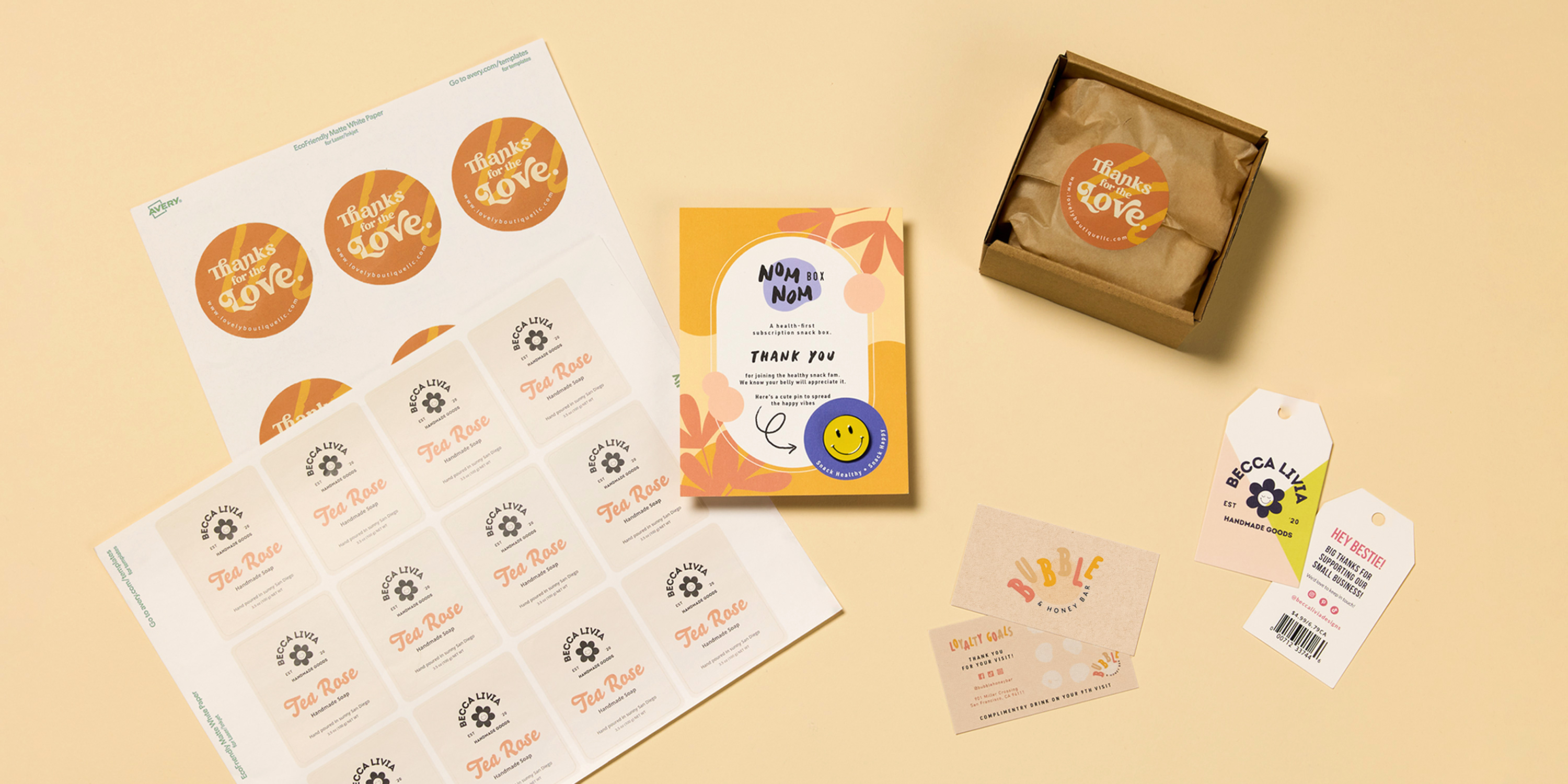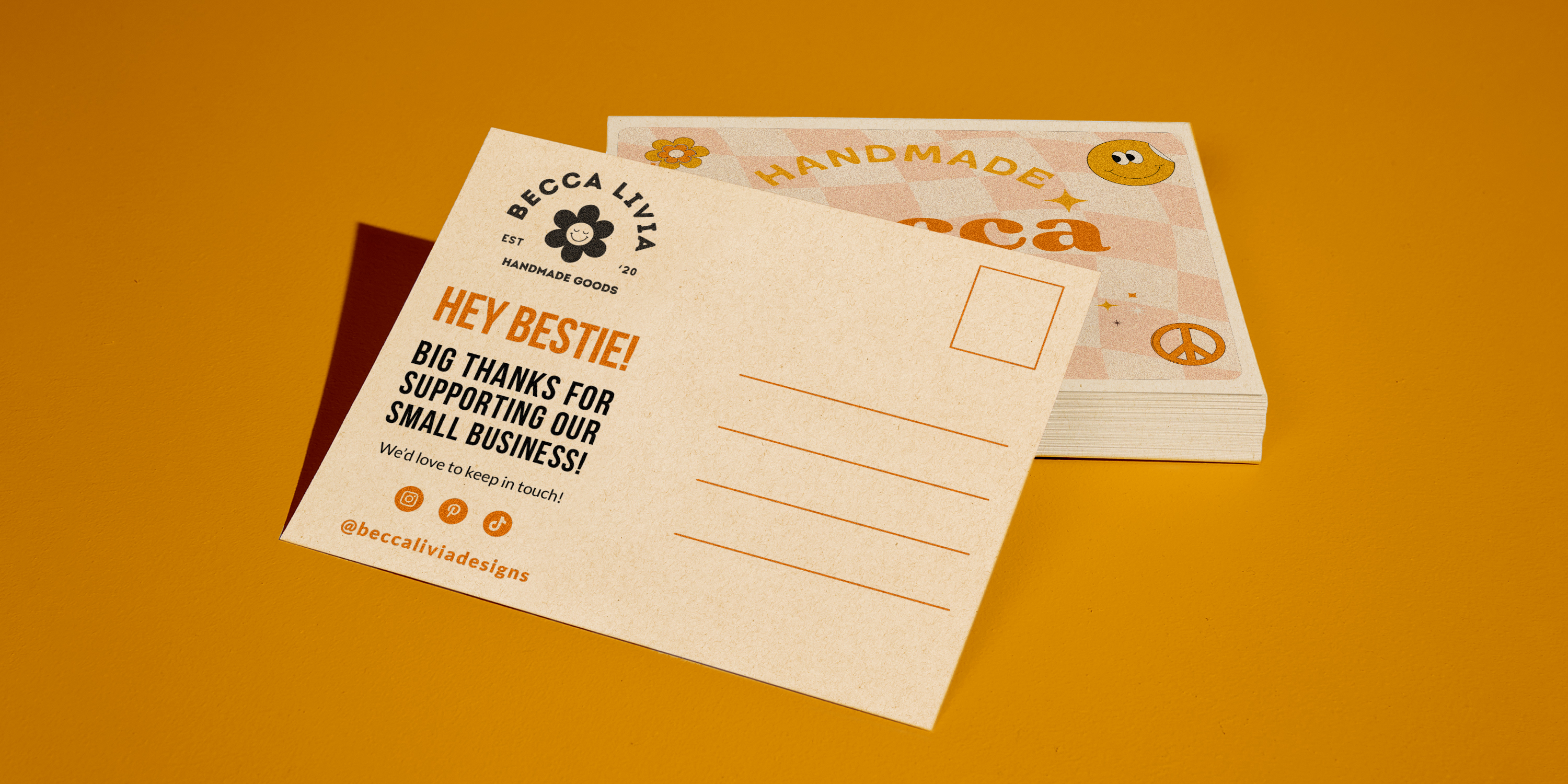5 Easy Ways Your Business Can Be More Environmentally Friendly
Trying to make your small business more environmentally friendly? Here’s how I made meaningful eco-friendly changes without the overwhelm.
Sustainability can be overwhelming—these are the easiest switches I’ve found.
If you own a small business like me, sustainability can feel overwhelming, especially when you feel like you’re juggling a million other things. But, I can tell you from experience, that you don’t have to overhaul your entire operation to make a difference. I’ve found that small, consistent changes helped me become more environmentally friendly without adding stress to my workload.
What’s more, adopting environmentally sustainable practices is good for the planet, and your business. Did you know that 66% of people consider sustainability a top factor when buying products (Global Sustainability Study 2022, Simon-Kucher & Partners)? With that in mind, think of embracing sustainability as a way to not only convert customers but also create customer loyalty. On top of that, improving efficiency and reducing waste can even save you money in the long run. Whether it’s switching to eco-friendly packaging, minimizing excess materials, or making mindful purchasing decisions, simple adjustments can have a big impact over time.
In this post, I’ll share my top five easiest ways to make your business more environmentally friendly—without feeling overwhelmed.
1) Make your packaging easier for consumers to recycle
Use recyclable packaging materials
As a kid in the 90s, I constantly heard “Recycle, Reduce, Reuse”—usually alongside images of newspapers, aluminum cans, and plastic bottles. But the truth is, we can’t recycle most plastic because its quality drops every time we break it down and try to reform it. Even soda bottles don’t meet recyclability thresholds for going in curbside recycling bins.
Shipping and product packaging
One way I make my outer packaging easier for consumers to recycle is by simply using paper and cardboard instead of plastic bubble mailers. Another thing to think about is product containers. That’s not usually something I need because I make fantasy fashion accessories, but I definitely pay attention to the containers that products I buy come in. For example, if you sell something like lip balm or organic honey, you could opt for reusable tin containers and glass jars instead of plastic tubes or jars—both of which are easier to recycle. In fact, you can melt down and reform tin over and over—and it still keeps its original quality.
Fillers inside the package
The same goes for filler. I switched out bubble wrap, air pillows, and Styrofoam filler for recyclable filler like shredded paper or biodegradable packing peanuts. Personally, I prefer the look of shredded paper, but sometimes you just can’t beat the functionality of peanuts. For delicate items that need a lot of packing, I use biodegradable peanuts and hide them under shredded paper to preserve my brand’s cottagecore fantasy vibes. You can dissolve the peanuts in water or even used in them in compost!
Shipping labels and tape
First of all, not all shipping labels, packing tape, or stickers are recyclable, and that’s something I really never thought about until working at Avery. I think the confusion comes from the fact that removing non-recyclable tape and labels is helpful but not required when recycling boxes. The reason you don’t have to remove them is because the recycling process will separate them from the paper… but what then? The recycling process removes those materials, but we can’t reuse them—so they end up in the landfill. Now I know that the better choice is to choose recyclable shipping labels and eco-friendly packing tape.
Are stickers recyclable?
Yes, some stickers (and labels) are recyclable, but whether you can recycle them depends on four factors:
- Material—Paper stickers and labels are more recyclable than plastic, vinyl, or film ones.
- Adhesive type—Recycling-Compatible Adhesive (RCA) improves recyclability.
- Coating—Uncoated paper is the most recyclable option since it doesn’t require additional processing.
- Application—Recyclable stickers and labels can’t be recycled if they’re stuck on non-recyclable materials, such as silicone-coated backing or liners.
What is RCA?
Unlike regular adhesives that can gum up the recycling process, Recycling-Compatible Adhesive (RCA) is designed to break down cleanly. This makes it easier for consumers and waste management plants to recycle your packaging. For example, if you use uncoated paper labels or stickers with RCA on a cardboard box, the whole thing can go in curbside recycling. On top of that, the labels and stickers don’t have to be removed and thrown away during processing. It’s a small detail that makes a big difference—helping more materials get a second life instead of ending up in the trash.

2) Replace sizzle packaging with more environmentally-friendly options
If you’re a small business on Etsy® or Shopify®, there’s a lot of pressure to create over-the-top sizzle packaging and memorable unboxing moments. I’ve felt that pressure, and I’m here to tell you that you don’t have to choose between sustainability and a great unboxing experience. You can still make your customers smile with eco-friendly packaging that helps reduce waste. I started by following a lot of the practices in step one of this blog post, which made my packaging easier to recycle after it reached my customers. Then I switched to using boxes, mailers, and shipping labels made with recycled materials and responsibly sourced paper. The next leap was natural: replacing all the cute promo cards, tags, and labels I use inside packages to bring my brand to life.
Eco-friendly tags and labels that still wow
Cards, tags, and labels made with sustainable options—like recycled materials and responsibly sourced paper—are easy to find at Avery, of course. But actually switching my designs to those products was easier than I expected. Some of my past designs were already saved to my free Avery account in the cloud from the last time I made sizzle packaging. I just used this method to apply my saved Avery designs to different Avery products. A few designs were new ones I’d made in Canva®, but that was easy too.
Every Avery product has a matching blank template, which helps you place your design exactly where it should print. That’s because each blank template includes embedded safety, trim, and bleed lines. (I’ve cued up this helpful video about artwork guidelines to about 41 seconds in, where this is explained in more detail.) All of these tools and tips helped me make sure that the environmentally friendly version of my promo cards, labels, and tags came out exactly the way I envisioned.
3) Reuse shipping boxes and packing materials
One of the easiest ways to save money—and be a little more sustainable—is by reusing the shipping supplies you already have. Personally, I save almost every box I receive. I just peel off the old labels and tape, then turn the box inside out for a clean slate. It feels great to repurpose something instead of tossing it. And even though I don’t buy bubble wrap, I have no problem reusing bubble wrap that I receive so that I can extend its lifecycle. Of course, when I receive a package with fillers like packing paper, shredded paper, or biodegradable peanuts, I feel like I’ve hit the jackpot. I can’t wait to reuse them for packing up my own orders.
Occasionally, I don’t want to flip a box inside out, and that’s when Avery TrueBlock® labels can really come in clutch. They completely cover up old barcodes and shipping labels so you can reuse boxes without anything showing through. Even better, these shipping labels with TrueBlock use RCA and are made with responsibly sourced paper. For more creative and practical tips to stretch your shipping budget, check out this post about packing and shipping products for less.
4) Try digital freebies instead of physical ones
Freebies are everywhere in Etsy packages—and for a few good reasons:
- They help build customer loyalty.
- They add perceived value.
- They’re a marketing tool.
- They’re part of the handmade/indie seller culture.
That said, when I order from Etsy makers, I’m not always sure what to do with all those little extras. If they’re not items I’ve chosen or that suit my taste, I usually end up tossing them—not because I want to, but because I don’t know what else to do with them.
That’s why I started switching from physical freebies (which often end up in landfills) to digital ones. It’s one of the easiest ways to reduce your environmental impact as a seller.
Personally, I like to create exclusive phone wallpapers for giveaways—it’s become one of my favorite ways to connect. You could also offer things like tutorials, consultations, or even mini masterclasses. Digital freebies don’t just eliminate packaging waste; they also cut down your carbon footprint while still delivering real value.

5) Switch to environmentally-friendly paper for bulk marketing materials
If you’re printing anything in bulk—like direct mail pieces or business cards—it’s worth considering the environmental impact of your materials. Personally, business cards are the item I order in bulk the most. At a large comic convention, I can easily go through 2,000 of them. For other small businesses, direct mail marketing can be a powerful tool for generating leads, but let’s be real—it also creates a lot of paper waste.
The good news is you can make smarter, more sustainable choices without sacrificing quality. Look for postcards and business cards made with recycled materials, especially those with post-consumer waste. Uncoated paper is another great option because it’s easier to recycle after use. And if you really want to go the extra mile, choose processed chlorine-free (PCF) paper. It’s a cleaner alternative where no new chlorine is used to bleach the paper—only eco-friendly options like oxygen or hydrogen peroxide.
My go-to choices are matte white and kraft brown paper—both available from Avery and both much friendlier to the planet than glossy or heavily coated paper. Even small decisions, like switching to recycled stock, add up when you’re printing in large quantities.
Easy environmentally friendly steps for your small business
Sustainability doesn’t have to be all or nothing—it’s really about making small, thoughtful choices that add up over time. Each step I’ve taken has made a real difference, without adding stress or sacrificing my brand’s personality. Here are a few of the easiest changes I’ve made:
- Making my packaging easier to recycle
- Reusing boxes, packing paper, and fillers
- Swapping out sizzle packaging for recycled materials
- Offering digital freebies instead of physical ones
- Choosing eco-friendly paper for business cards and other bulk marketing materials
Best of all, these simple switches have helped me feel more confident about my environmental impact—without feeling overwhelmed. And the best part? Avery has the tools, templates, and materials to help you get started and bring your ideas to life exactly the way you imagined.
Looking for more ways to be environmentally friendly? Visit our YouTube channel or follow us on Facebook, TikTok, and Pinterest for fresh inspiration. When you’re ready to share your creations, tag us on Instagram using #AveryProducts—we’d love to see your favorite green projects!